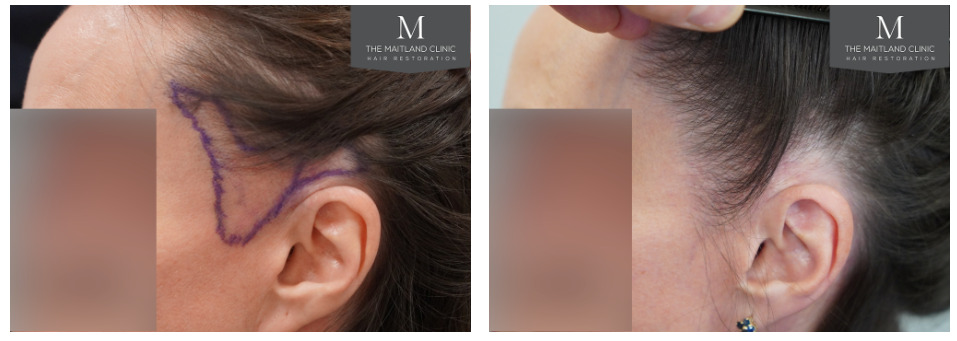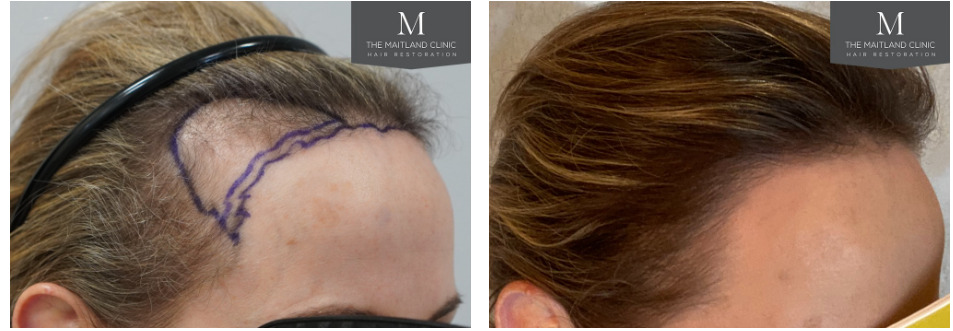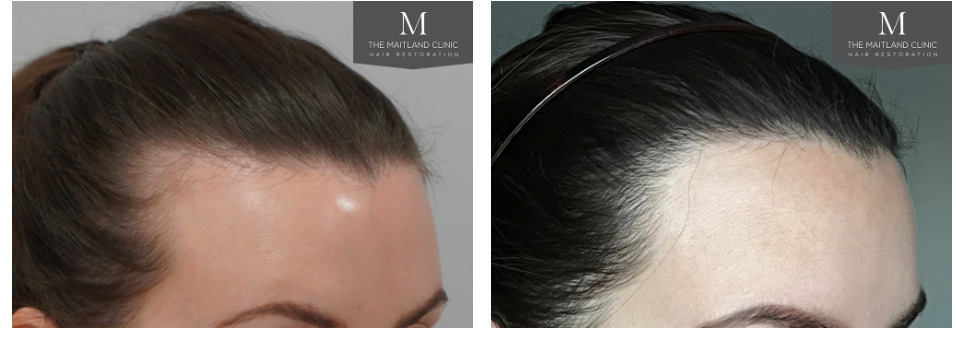Temple hair loss in women
30th April 2025
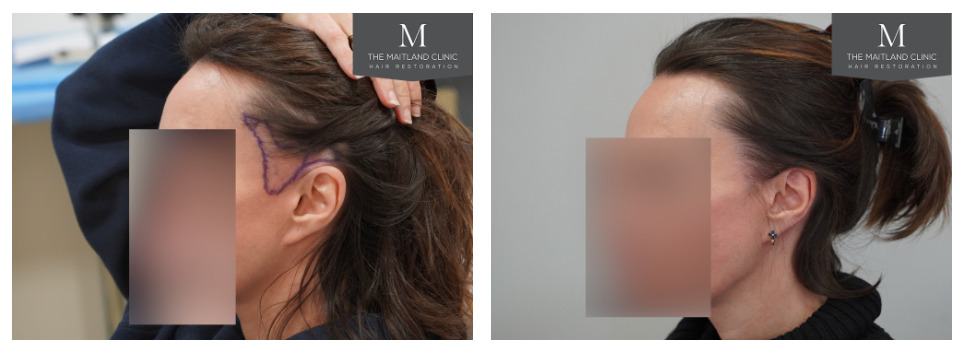
Temple hair loss is a specific type of hair thinning that occurs around the temples—the flat regions on either side of your forehead. While hair loss in women often brings to mind general thinning across the scalp or widening of the part line, temple hair loss is more localised. It can be particularly distressing due to its visibility and association with aging, hormonal changes, or a more masculine hairline.
In this article, we’ll explore what is temple hair loss, the causes, the role of stress, and how to treat temple hair loss effectively.
What is temple hair loss?
Most of us naturally have thinner hair at the sides of our head. But if you’re noticing that the hair on your temples or sides of your head is significantly thinning, you may be experiencing temporal hair loss.
Temple hair loss is the gradual thinning or shedding of hair near the temples. In women, this often presents as receding hairlines on the sides, which can lead to noticeable gaps. It can sometimes lead to an ‘M shaped’ hairline, where the sides of the hairline start receding backwards.
Temple hair loss can be a symptom of lifestyle factors or other underlying conditions. Temporal recession can also be a hairline shape that some women are born with (congenital temporal recession). It’s important to get an accurate diagnosis for effective treatment.
Common causes of female temple hair loss
There are a number of factors which can lead to temple hair loss in women.
Traction alopecia
Frequently wearing tight hairstyles such as ponytails and braids can create prolonged tension on the scalp, particularly at the temples. This tension and continued stress can damage hair follicles, resulting in a form of hair loss known as traction alopecia.
Hormonal imbalances
Hormones fluctuate often, but some hormonal changes, especially those related to pregnancy, menopause, or thyroid disorders, can significantly impact hair health.
Hormonal changes like reduced oestrogen or increased testosterone levels can lead to certain types of hair loss which may lead to specific hair loss around the temples.
Telogen effluvium and stress
A lesser-known but sometimes important factor in temple hair loss is stress. Telogen effluvium is a type of temporary hair loss where more hair follicles than usual enter the resting or shedding phase of the hair cycle. This means the hair sheds much more than normal.
Telogen effluvium is usually caused by a physiological stressor such as injury, illness, childbirth, crash diets, hormonal changes, or certain medications. Essentially it’s hair loss caused by stress or a change to your body. It usually causes thinning across the scalp, but the temples and crown can sometimes show the most obvious hair loss.
Nutritional deficiencies
Low levels of certain vitamins and minerals can weaken hair structure and disturb growth cycles. This can lead to shedding, especially in more fragile areas like the temples.
Genetics
Some women inherit a predisposition to a type of hair loss called androgenetic alopecia (female pattern baldness). In most women, androgenetic alopecia leads to diffuse thinning throughout the top of the head and the widening of the parting, and the hairline and temples are often less impacted. However, in some cases, women may also experience hair loss around the temples.
How to treat temple hair loss
Ultimately, the best treatment for temple hair loss depends on the cause of the condition, so it’s vital to get in touch with a hair loss specialist as soon as you notice signs of temple hair loss.
Some of the most effective evidence-based strategies include:
Hair loss medication
There are several oral and topical medications that might be used to treat female temple hair loss, depending on the cause of your hair loss. These may include drugs such as minoxidil, finasteride, spironolactone or latanoprost. Hair loss medications can often be tailored to the individual and used in conjunction with other treatments.
An in-depth consultation with a hair loss specialist, such as a hair transplant surgeon, dermatologist or trichologist, is vital for identifying the right medication for you.
Read more about hair loss medications at The Maitland Clinic.
Platelet-rich plasma therapy (PRP therapy)
PRP therapy involves taking a sample of your own blood, processing it to isolate growth factors, and reinjecting it into the scalp. This can help to stimulate the body’s own healing and regenerative abilities, stimulating new hair growth. This can help to improve overall hair density, including at the temples.
Low-level laser therapy
Devices like laser helmets use light therapy to improve blood flow and reduce inflammation in the scalp. This can stimulate cell functioning, which can lead to improved hair growth.
Learn more about laser therapy.
Lifestyle support and treating other conditions
- Hairstyle modifications: avoiding tight hairstyles, heavy extensions or anything that puts repeated strain on the temple region can help to improve symptoms of traction alopecia, like thinning at the temples. Depending on the severity of your temple hair loss, you may need additional treatments alongside making hairstyle modifications to help encourage new hair growth.
- Medication: if your hair loss is due to hormonal changes, certain medication or medication changes can help to improve your symptoms. This greatly depends on individual circumstances, so it’s important to follow the guidance of your healthcare professional.
- Nutritional changes: ensuring a healthy, balanced diet rich in the right vitamins and minerals may help to improve temple hair loss, alongside other hair loss treatments.
Hair transplant surgery
In some cases, non-surgical treatments might not be effective for temple hair loss. But there are still a range of surgical treatment options that can improve hair loss around the temples.
At The Maitland Clinic, we specialise in a range of advanced surgical techniques such as the Follicular Unit Transplant technique and the Follicular Unit Extraction technique. Although these techniques differ slightly, they both involve using your own healthy hair follicles and placing them in areas of hair loss.
We understand that every individual is unique and so is our approach. We offer bespoke hair transplants tailored to your specific needs and hair loss pattern to ensure the best possible outcome.
Learn more about hair transplant surgery.

Final thoughts
Temple hair loss in women can be incredibly upsetting, but there are a range of treatment options. Because it can stem from a range of factors, a holistic and individualised approach is key.
If you’re noticing thinning around your temples, don’t hesitate to get in touch. Early intervention can help to improve your overall outcome.
To learn more about temple hair loss and explore your treatment options, arrange a consultation with our team.


